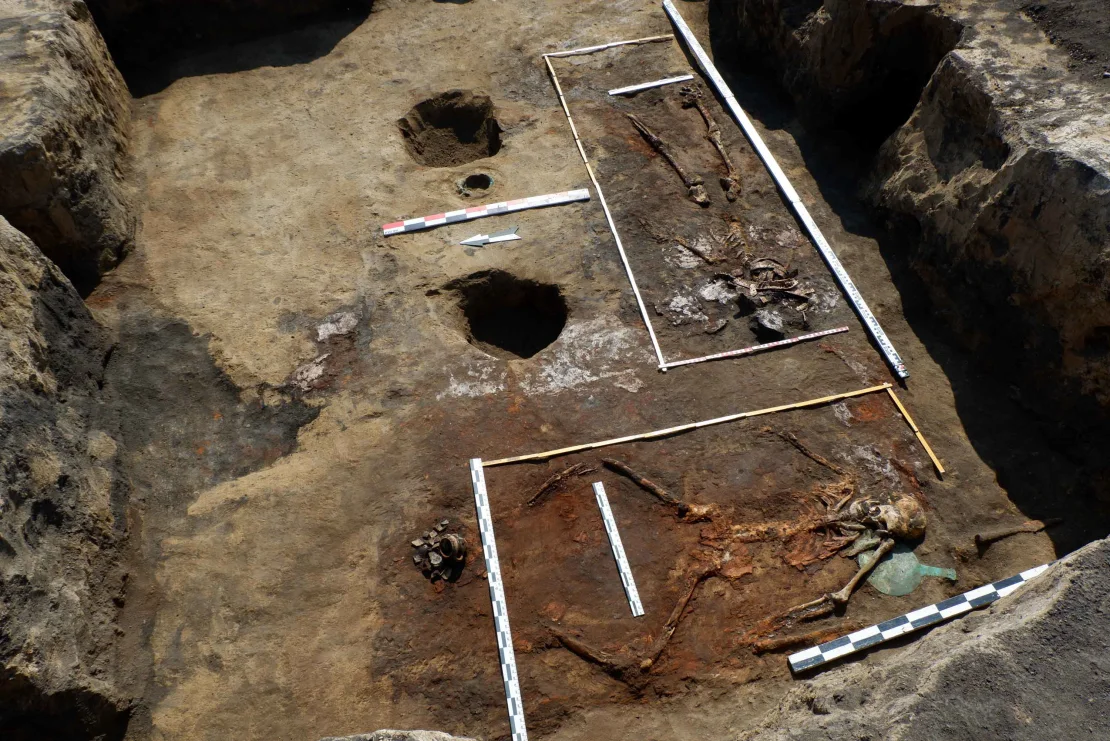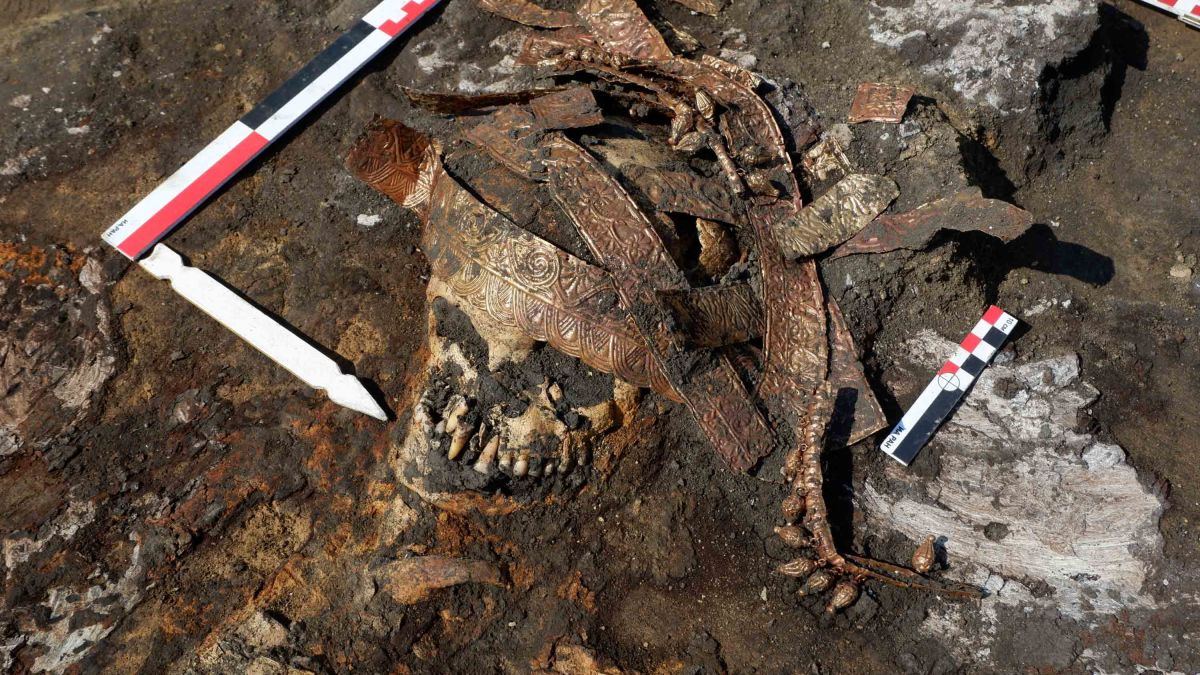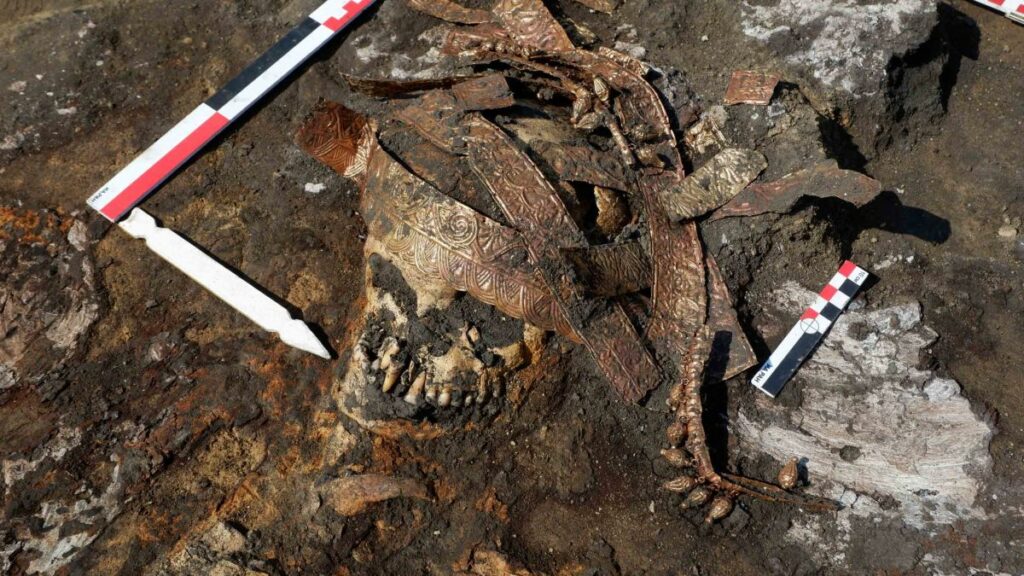In a groundbreaking discovery, researchers from Russia’s RAS Institute of Archeology have uncovered the remains of four Amazons, the legendary female warriors of ancient times, within a single tomb. This remarkable find not only sheds new light on the lives and customs of these formidable women but also provides a rare glimpse into the history of the Scythian nomadic tribes that once roamed the vast expanses of Eastern Europe.
The discovery, made in the Voronezh region of Russia, has captivated the archaeological community and sparked renewed interest in the enigmatic Amazons, who have long captured the imagination of historians, writers, and popular culture. By meticulously analyzing the artifacts and burial practices found at the site, researchers have pieced together a compelling narrative that offers a deeper understanding of these remarkable women and the society in which they lived.
The Tomb and Its Occupants

The tomb, constructed of clay and oak blocks, was discovered within the Devitsa V cemetery, a site that has been the focus of archaeological excavations since 2010. Within this remarkable structure, the researchers unearthed the skeletons of four women, each with a distinct age profile.
The youngest of the group was estimated to be between 12 and 13 years old at the time of her death, while the oldest was a woman between 45 and 50 years of age. The two other individuals were young women, one aged 20 to 29 and the other 25 to 35 years old. This diversity in age suggests that the tomb was not a single burial event but rather a resting place for Amazons of different generations, perhaps reflecting the continuity and legacy of their warrior culture.
Artifacts and Burial Customs
The tomb’s contents provided a wealth of information about the lives and customs of the Amazons. Among the artifacts discovered were iron arrowheads, a bird-shaped iron hook, horse harnesses, iron knives, and a broken black lacquer vase painted with a red palmette. These items not only serve as evidence of the Amazons’ martial prowess but also shed light on their daily lives and the importance of horses in their nomadic culture.

The burial practices observed at the site were equally intriguing. The young woman, buried as a “horseman,” had her tendons cut in a specific grave tradition, a practice that may have been associated with her warrior status or the belief that it would enable her to ride horses in the afterlife. The graves of the other two young women remained pristine, with the bodies reclining on wooden beds covered in grass, suggesting a high level of reverence and care in their interment.
The most remarkable find, however, was the burial of the oldest woman, who was adorned with a calathos, a ceremonial headdress decorated with floral ornamented plates and shaped pendants. Her jewelry, comprising 65% to 70% gold mixed with copper, silver, and iron, was a testament to her high status and the wealth and sophistication of the Amazons. The inclusion of an iron knife wrapped in fabric and a rare iron arrowhead with a forked end further underscores the significance of this individual and the reverence with which she was treated in death.
The Significance of the Discovery
The discovery of the Amazon tomb within the Devitsa V cemetery holds immense significance for our understanding of the Scythian nomadic tribes and the role of women in their society. Previous archaeological findings have hinted at the existence of Amazons, but the current discovery provides the most comprehensive and well-preserved evidence to date.

By analyzing the diverse ages and burial practices of the four women, researchers can gain valuable insights into the social structure and cultural traditions of the Amazons. The presence of young women alongside their older counterparts suggests a continuity of the warrior tradition, where girls were likely trained and groomed from a young age to take up arms and defend their communities.
Moreover, the exceptional burial of the oldest woman, adorned with a rare and ornate headdress, indicates the high status and respect accorded to these female warriors within Scythian society. This finding challenges the common perception of ancient patriarchal societies and highlights the significant role that Amazons played in the social, political, and military spheres of their time.
The Enduring Legacy of the Amazons
The discovery of the Amazon tomb in Russia’s Voronezh region has captivated the public’s imagination and reignited the ongoing fascination with these legendary female warriors. The Amazons have long been a source of inspiration, from the ancient Greek myths to the modern-day portrayal of Wonder Woman in popular culture.

This latest archaeological find not only provides tangible evidence of the Amazons’ existence but also offers a deeper understanding of their lives, customs, and the respect they commanded within their society. By shedding light on the Amazons’ warrior culture, burial practices, and social status, this discovery has the potential to reshape our perceptions of gender roles and power dynamics in the ancient world.
As the research continues and the artifacts are further analyzed, the insights gleaned from this remarkable tomb will undoubtedly contribute to a more nuanced and comprehensive understanding of the Amazons and their place in history. The legacy of these formidable women will continue to inspire and captivate audiences for generations to come, reminding us of the remarkable achievements and contributions of women throughout history.
Conclusion
The discovery of the Amazon tomb in the Voronezh region of Russia is a momentous archaeological find that has the potential to rewrite our understanding of the Scythian nomadic tribes and the role of women in ancient societies. The well-preserved remains and the wealth of artifacts found within the tomb provide a rare and invaluable glimpse into the lives, customs, and status of these legendary female warriors.
By meticulously analyzing the evidence and piecing together the stories of the four Amazons, researchers have uncovered a remarkable narrative that challenges traditional historical narratives and offers a more inclusive and diverse perspective on the ancient world. This discovery not only sheds light on the Amazons but also serves as a testament to the enduring legacy of these remarkable women, whose influence continues to resonate in our contemporary culture.
As the archaeological community delves deeper into the secrets of the Amazon tomb, the world eagerly awaits the insights and revelations that will emerge, further enriching our understanding of these formidable warriors and the society in which they lived.

